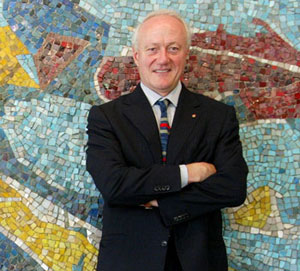What are Cultural Landscapes?
Our conference is to deal with the most recent research achievements of a highly delicate and often discussed cultural heritage, the cultural landscapes. It has become evident for all experts by now that cultural heritage can stay sustainable only in case it is well managed, incorporated in local economic life and is transmitted to the next generations. In other words, it means that we are interested in the state-of-the-art preservation, tourism and education of Cultural Landscapes.
Definitions:
- „Cultural landscapes are cultural properties and represent the "combined works of nature and of man". They are illustrative of the evolution of human society and settlement over time, under the influence of the physical constraints and/or opportunities presented by their natural environment and of successive social, economic and cultural forces, both external and internal.” http://whc.unesco.org/archive/opguide08-en.pdf#annex3
- „The UNESCO Operational guidelines recognize a category of Cultural Landscape described as "Organically Evolved". Such a landscape "results from an initial social, economic, administrative, and/or religious imperative and has developed its present form by association with and in response to its natural environment. Such landscapes reflect that process of evolution in their form and component features. It further recognizes 2 subcategories of such landscapes "Relict" and "Continuing" A Relict Landscape is a "fossil landscape where the evolutionary process came to an end at some time in the past, either abruptly or over a period. Its significant distinguishing features are, however, still visible in material form" Only sites categorized as such in UNESCO documentation are included.” http://www.worldheritagesite.org/tags/tag728.html
Categories:
- „The most easily identifiable is the clearly defined landscape designed and created intentionally by man.
- The second category is the organically evolved landscape:
- The final category is the associative cultural landscape.”
- relict (or fossil) landscape
- continuing landscape
„There are four general types of cultural landscapes, not mutually exclusive: historic sites, historic designed landscapes, historic vernacular landscapes, and ethnographic landscapes.” http://www.nps.gov/tps/standards/four-treatments/landscape-guidelines/terminology.htm
History:
“In 1992 the World Heritage Convention became the first international legal instrument to recognise and protect cultural landscapes. The Committee at its 16th session adopted guidelines concerning their inclusion in the World Heritage List.
The Committee acknowledged that cultural landscapes represent the "combined works of nature and of man" designated in Article 1 of the Convention. They are illustrative of the evolution of human society and settlement over time, under the influence of the physical constraints and/or opportunities presented by their natural environment and of successive social, economic and cultural forces, both external and internal.” http://whc.unesco.org/en/culturallandscape
Landscape Architecture:
“Cultural geography, ethnography, public history, ecology, historic preservation and other disciplines have all contributed to new ways of understanding the formation of human-influenced landform and natural systems (cultural landscapes). Landscape architects and planners are often asked to participate in design and management processes affecting cultural landscapes, but much new theory remains unassimilated in practice. Design professionals have tended to emphasize how to manage cultural landscapes (treatment plans, inventories, cultural landscape reports, historic vegetation management plans, etc.) but not why we are concerned with historic sites and places or what we can hope to accomplish in working with them.” - Ethan Carr, Assistant Professor www.umass.edu/history/ph/ph_word/Carrsyllabus.doc
Future:
Interview between Jared Green and Francesco Bandarin (former Director of the UNESCO World Heritage):

Q: “Many landscape architects are working on rehabilitating brown fields in urban areas, creating new, sustainable landscapes out of degraded, used lands. This involves incorporating new cultural values related to sustainability into the landscape. One example is the upcoming Freshkills Park in New York City, which has gone from a massive landfill to a park and ecological preserve. Do you see these types of projects being recognized as cultural landscapes in the future?”
A: “I think they will. Essentially, these sites are a revisitation of our industrial history. We have a number of examples in Europe, especially in Germany, which, in fact, was at the forefront of this type of approach. The transformation of these industrial landscapes or wastelands into new parks is something that has really changed the lives and profiles of entire regions. If you go today to the Ruhr region, which used to be a center of the coal mining industry, you'll find a huge redesign effort has resulted in a new landscape. I cannot exclude these from consideration in the future because they really represent an important achievement of contemporary society.”